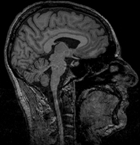Svennemir
Posts: 542
Joined: 11/2/2001
From: Denmark
Status: offline

|
Hello again, here's anohter one - pasted for your convenience, but you may want to check out this link for information on the principle of induction (of course, induction is not really difficult to understand so you don't have to). It's not exactly easy, especially for people who are not accustomed to mathematics. Try to find the error in the "proof"!
--------------------------------------------------------------------------
All People in Canada are the Same Age
This "proof" will attempt to show that all people in Canada are the same age, by showing by induction that the following statement (which we'll call "S(n)" for short) is true for all natural numbers n:
Statement S(n): In any group of n people, everyone in that group has the same age.
The conclusion follows from that statement by letting n be the the number of people in Canada.
(....)
The Fallacious Proof of Statement S(n):
* Step 1: In any group that consists of just one person, everybody in the group has the same age, because after all there is only one person!
* Step 2: Therefore, statement S(1) is true.
* Step 3: The next stage in the induction argument is to prove that, whenever S(n) is true for one number (say n=k), it is also true for the next number (that is, n = k+1).
* Step 4: We can do this by (1) assuming that, in every group of k people, everyone has the same age; then (2) deducing from it that, in every group of k+1 people, everyone has the same age.
* Step 5: Let G be an arbitrary group of k+1 people; we just need to show that every member of G has the same age.
* Step 6: To do this, we just need to show that, if P and Q are any members of G, then they have the same age.
* Step 7: Consider everybody in G except P. These people form a group of k people, so they must all have the same age (since we are assuming that, in any group of k people, everyone has the same age).
* Step 8: Consider everybody in G except Q. Again, they form a group of k people, so they must all have the same age.
* Step 9: Let R be someone else in G other than P or Q.
* Step 10: Since Q and R each belong to the group considered in step 7, they are the same age.
* Step 11: Since P and R each belong to the group considered in step 8, they are the same age.
* Step 12: Since Q and R are the same age, and P and R are the same age, it follows that P and Q are the same age.
* Step 13: We have now seen that, if we consider any two people P and Q in G, they have the same age. It follows that everyone in G has the same age.
* Step 14: The proof is now complete: we have shown that the statement is true for n=1, and we have shown that whenever it is true for n=k it is also true for n=k+1, so by induction it is true for all n.
|
 Printable Version
Printable Version

















 New Messages
New Messages No New Messages
No New Messages Hot Topic w/ New Messages
Hot Topic w/ New Messages Hot Topic w/o New Messages
Hot Topic w/o New Messages Locked w/ New Messages
Locked w/ New Messages Locked w/o New Messages
Locked w/o New Messages Post New Thread
Post New Thread